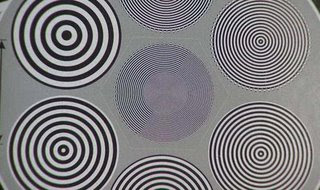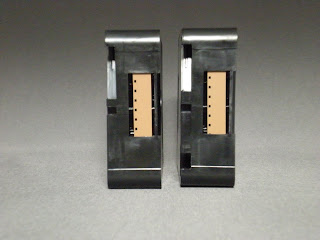
#3 Correct Exposure:
Having the correct exposure is one of the most critical aspects of getting the best-looking super8 pictures. There are books written on this subject where you can learn the nuances of lighting and exposure reading. The fundamental issue for super8 filmmakers today is that too many filmmakers are relying on their aging super8 cameras internal exposure system to make this critical setting. Some of these systems were not even that good when they where new, let alone 30 to 40 years down the road. Photography is after all, painting with light. To get your best results, you have to learn about light, how it relates to different film stocks, and how to choose the best exposure setting. My super8 images improved dramatically when I bought an inexpensive light meter (About $75.00) and started taking some readings and doing some experimentation. I found that even the factory settings prescribe by the manufacture of both the film and cameras were not always optimum to make the best-looking Super8 pictures. So many factors affect your exposure. Did you know that your best exposure would be different based on if you are in wide or telephoto on your zoom? For your camera’s internal system to work, it has to be able to recognize the notch system in the super8 cartridge and be calibrated for it to work well. The ASA notches were designed to cover a wide range of ASA original films from 10 to 640 ASA measure in 2/3 stop increments. Some Super8 cameras can only recognize a single setting where others can read all six. None of this means much if the system has not been calibrated in 15years. Once you own a light meter it is possible the do some comparisons if only to understand how your system is working. I use my cameras internal system all the time but I always have my light meter to check and compare settings.
#4 Focus
Focusing a lens was such a standard fundamental procedure to taking photos or shooting movies that it is difficult for those of us that grew up with this tradition to understand that today many filmmakers do not need or know how to focus. Good super8 filmmaking depends on good manual focus because there are no auto focus systems. Filmmakers need to spend some quality time understanding it, practicing it and learning when it is the most critical and when they could let their guard down. In the “good old days “a lot of photography was restricted to outdoors because of the slow ASA. Today you can have Super8 with 500 ASA so you can film in some pretty low light. This makes seeing focus more difficult. The original design of super8 cameras did not consider this. If you are going to get good super8 footage, you need to understand focus and depth of field, and practice.
To focus a camera with your eye, the system starts with the correct setting of the cameras internal diopter. Everyone’s’ vision is slightly different so the diopter in a camera calibrates your eye to what the camera is seeing. There are many methods prescribed for setting the diopter. I learned using the infinity approach. You set the focus ring of the lens on infinity and then looking at something far away, you focus the diopter to your eye. There are numbers on every super8 lens that should correlate to the focus distance between the camera and the subject. These make great reference points to check if you are really getting the correct focus by “eyeing” it.
Most super8 cameras (except for Beaulieu) use a range focus systems. (Range Finder) This is not the easiest system to use and without the diopter, set correctly there is little chance of getting correct focus. The difficulty for modern super8 users is that when you look through the super8 camera you do not see all the information for easy focus. In particular, the F-stop or aperture and 85 filters are after where the focus optic is, so you do not see the effect of this on focus.
The other way to approach focus is to understand when it is critical and when its not. When you shoot at full telephoto, (the most zoomed in) and at full aperture (F the smallest number) on a big 10 to 1 super8 zoom the focus depth is less then an inch. This mean if your focus setting is wrong by even the slightest, or you move the camera as little as a few inches, you are out of focus. On the other extreme if your at full wide on the zoom and the smallest aperture (F the largest number) the focus depth is huge, maybe 50 feet or greater. In this situation it doesn’t’ matter where you set the focus you will be in focus.
Since most super8 film is shot in available light, you cannot change that. If you back off a little on that gorgeous lens to a wider setting and use slightly higher ASA film you will find focus to be much easier. At minimum, always make sure to vary your shoots so even if you are wrong you have a chance of having some focused material.
(c) Pro8mm 2009 www.pro8mm.com














.JPG)








